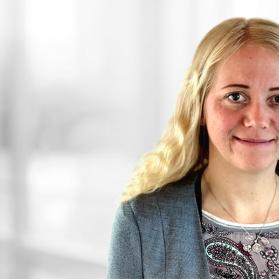In most of the German federal states, the application deadline has passed and the requirements reports have been submitted. Looking back, what were the challenges and opportunities with the Hospital Future Act (KHZG) ? An interview with Tobias Lauterborn, Head of Corporate IT at the Dernbach Group Katharina Kasper, and Pascal Frank from Detecon.
Detecon: What do you think of the basic idea of large-scale funding from the federal and state governments?
Lauterborn: Fundamentally speaking, I think it’s a good idea to support hospitals financially. Sometimes, however, you have the impression that they are trying to make up for the last ten years, when there was hardly any funding, in a very short time.
The Federal Social Security Office (BAS) has set some “rules of the game” that the states can further define more precisely. For example, we operate a total of four hospitals in two different German states, Rhineland-Palatinate and North Rhine-Westphalia, so we have to comply with different sets of regulations. There are varying submission deadlines, specifications for grants, ineligible aspects, transfer of grant funds, and much more. There should really be a more clearly defined overall structure for such a large and important federal project, one that will hopefully change significantly the world of digitalization for physicians in private practice or specialist care as well as for their patients.
Where do you see the greatest potential for optimization of future funding?
The goal of becoming more digital includes the component of becoming more secure. We had major issues in proving “15 percent information security.” It was not even clear what was meant by this for a long time. There has always been plenty of talk about security, but there is definitely more to information security than is generally discussed. Moreover, it turned out that the 15 percent had to be met for each funded project and could not span multiple funded ventures. This is illustrated by the example of a firewall, which is presumably important for multiple funded activities. Setting up a security strategy or overall strategy in accordance with these specifications becomes complicated for hospitals as most of them submitted their applications as members of an association.
The differences among the states were striking. Rhineland-Palatinate, for example, wanted to see the realization of a digitalization strategy. NRW was more interested in seeing completion of the standard forms. The subject of tenders also had its pitfalls. What contracts exactly must be awarded by a tender procedure? Again, it varies by state. One product for all four of our operations for funding category 2 would have been nice. But there has to be a tender procedure for two hospitals, but not for the other two. This makes a product strategy extremely complicated because two systems have to be connected; you can’t work efficiently and you create the interfaces twice. Registration on the online submission portal that had been developed was slow. There were difficulties in selecting areas of responsibility and uploading documents — all of these hurdles make this process enormously difficult.
When a law is passed at the federal level, it mustn’t allow so much latitude for action on the part of the single states. It would also be useful to work with people from the “grassroots” during preparation of the act.
On the 28th of October 2020, the Hospital Future Act (KHZG) came into force in Germany, an investment program designed to ensure more modern equipment and digitalized processes in hospitals. The federal government and federal states promote certain modernisation measures in this regard. Each federal state is entitled to a share of the total three billion euros provided by the federal government. Most of the states have already requested their demand reports for funding from the hospitals, and individual hospitals have already received their funding. By the end of 2021 at the latest, all applications for funding must be submitted by the states to the Federal Social Security Office (BAS).
In addition to the funding, payment reductions will be introduced from 2024 if the minimum level of digitalization has not been achieved. What do you think about this?
The deadline is 01/01/2025 — I really have my doubts about that. On the one hand, a deadline is not a bad idea; it ensures that the funding will also be utilized within a certain period of time and that the hospitals will reach the same level. On the other hand, the hospitals will also have to master their challenges in this period. It is not yet clear when the Federal Social Security Office will provide feedback on the applications, and the time pressure may be stressful for some parties. I am opposed to payment reductions because hospitals have enough to deal with in view of the shortage of specialists, the COVID-19 situation and the Diagnosis Related Groups (DRG) system. And now, here comes the KHZG [Future of Hospitals Act]. Other methods such as a percentage return of funds for non-performance without solid justification would be a possible option.
If, after submitting the application for the funding, you look back at the KHZG, what do you think has turned out to be especially successful?
I am hoping for uniform digitalization in certain areas. A patient doesn’t care what clinic he or she is in; in the essentials, at least, the same options are available everywhere via the patient portal. Speaking from our point of view in particular, we had a very good partner in the Ministry of Rhineland-Palatinate; our relationship was characterized by open communication. There was a lot of interest in learning what hurdles or questions we had and how best to help us.
What do you see when you consider the general mood in other clinics?
I’m sorry to say that the general mood about the KHZG is not really good, unfortunately. Not because people are opposed to digitalization, but because the path to application submission and implementation is so cumbersome, although it varies from one state to the next. Some didn’t even apply for everything because they don’t know how they are supposed to realize it all. My impression is that the underlying objective here was to set something, whatever it was, in motion quickly so that Germany no longer lags behind in digitalization. Too little consideration has been given to what digitalization means for hospitals, from IT security to acceptance by our patients to training our staff.
If you had had one wish during the application and implementation process, what would it have been?
More uniform rules for all.
To what extent has the KHZG helped your hospitals?
The KHZG lays a solid foundation for what is to be built. Some hospitals are much further along in their digitalization strategy — often the university hospitals. In rural areas, funding and staff are very limited. There, however, the law has been a big help. Places where there was no digitalization strategy before how have funding.
Would you recommend this type of funding to other countries in Europe?
The feeling remains that lawmakers are frantically trying to catch up with other EU countries. Austria and Switzerland are in some cases far ahead of us. What is important is not achieving everything in one fell swoop, but securing long-term and steady funding. This would give the institutions the time they need to develop and learn how to master the intricacies of funding.
What do you expect the hospital landscape will look like at the conclusion of the project, after 2025?
I suspect that there will be a little bit of a standstill or a recovery period for the clinics. I just hope it doesn’t last five to ten years again because we’ll otherwise be right back in the same dilemma we’re facing now. There is already talk of KHZG 2.0. Personally, I think that today’s optional criteria must become tomorrow’s mandatory criteria. That would at least be the logical step so that we don’t get bogged down again. Hopefully, however, there will be a different approach in place of a one-off cash payout — sustained support and aid over the long term. The important thing is that it must be manageable for the clinics, especially financially. I hope that we will not close significantly more clinics, but that we strengthen structures in rural areas in particular. The health of patients, not the profitability of a hospital, should remain the primary concern.
Thank you very much for the interview!
Tobias Lauterborn is the head of Corporate IT and the KHZG project of the Dernbach Group Katharina Kasper, which operates clinics in North Rhine-Westphalia and Rhineland-Palatinate. After completing his vocational training with a focus on IT specialist system integration, Mr. Lauterborn studied medical informatics (B. Sc.). He also works at the Middle Moselle Clinic and the Kreuznach Diakonie Foundation. Over the years, Lauterborn has programmed various software solutions in the medical field such as for hospital ward assignments and the documentation of implants. He has also managed projects in the area of telematics infrastructure.







